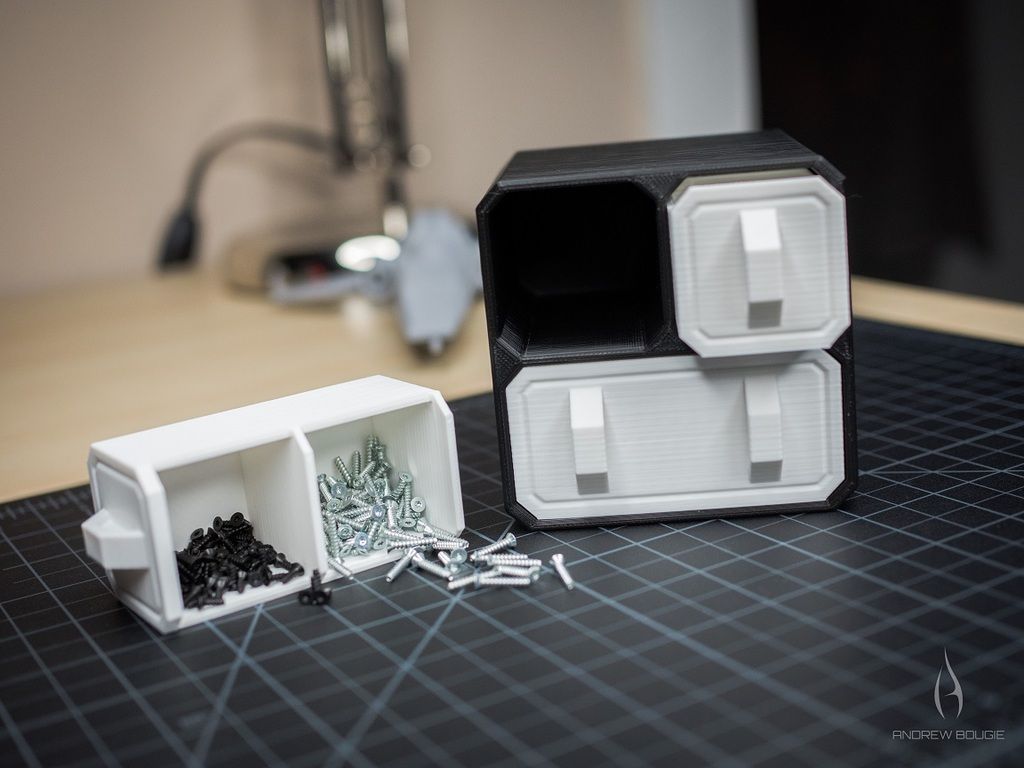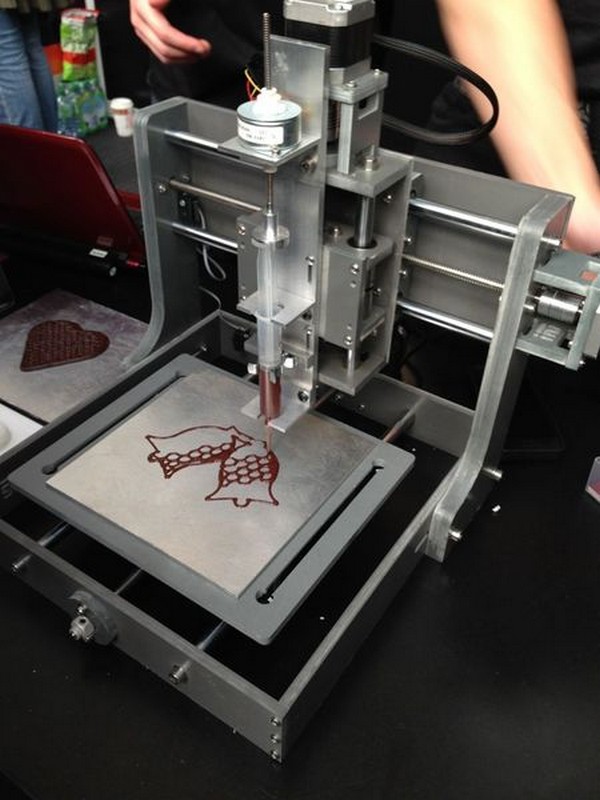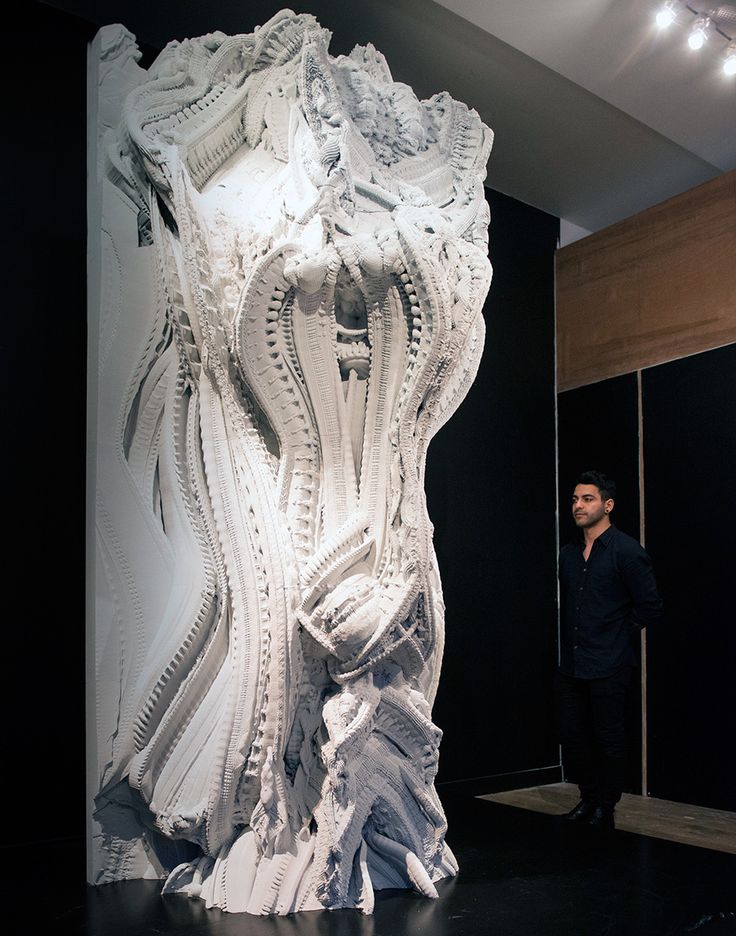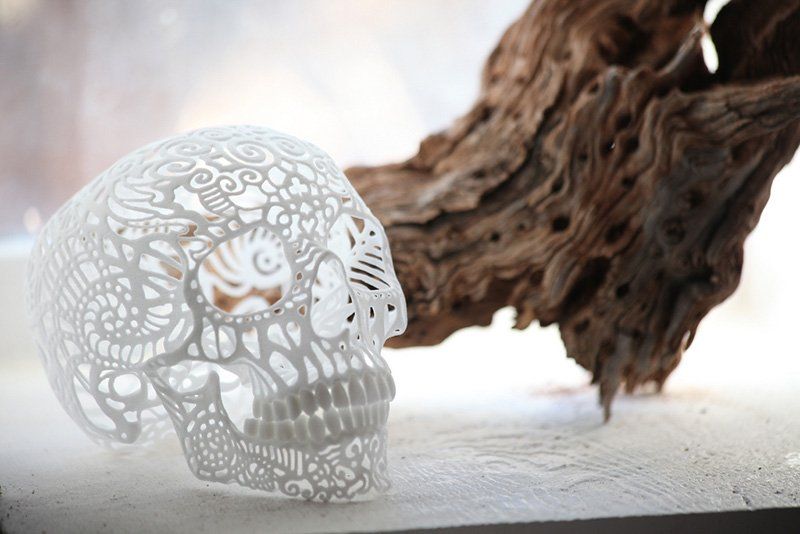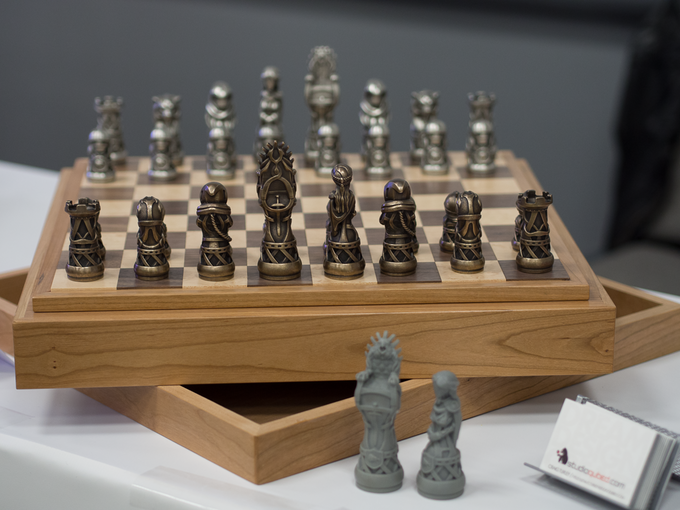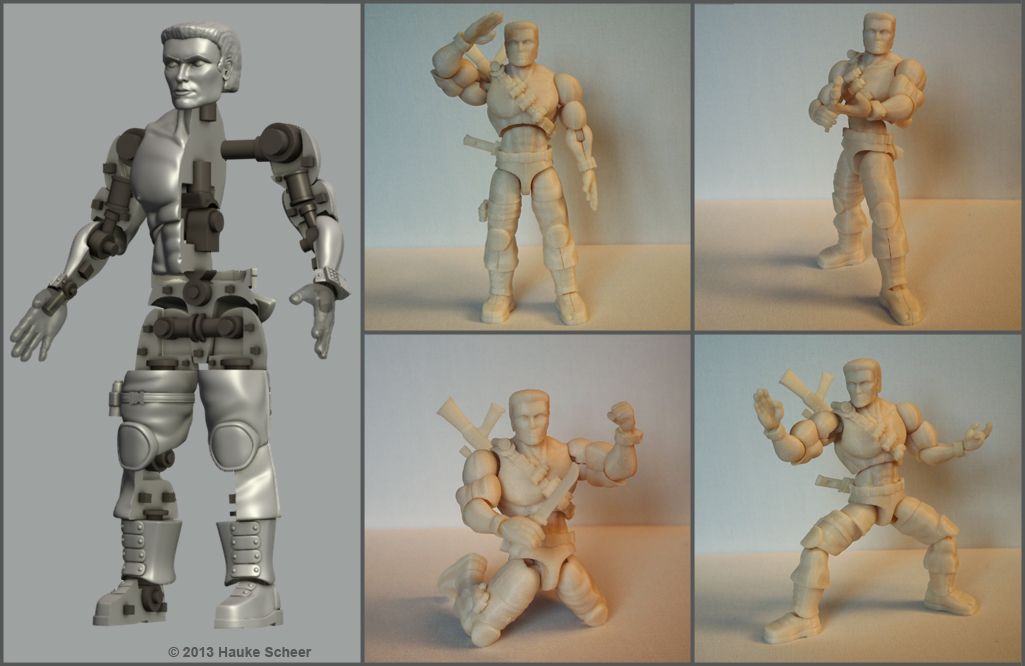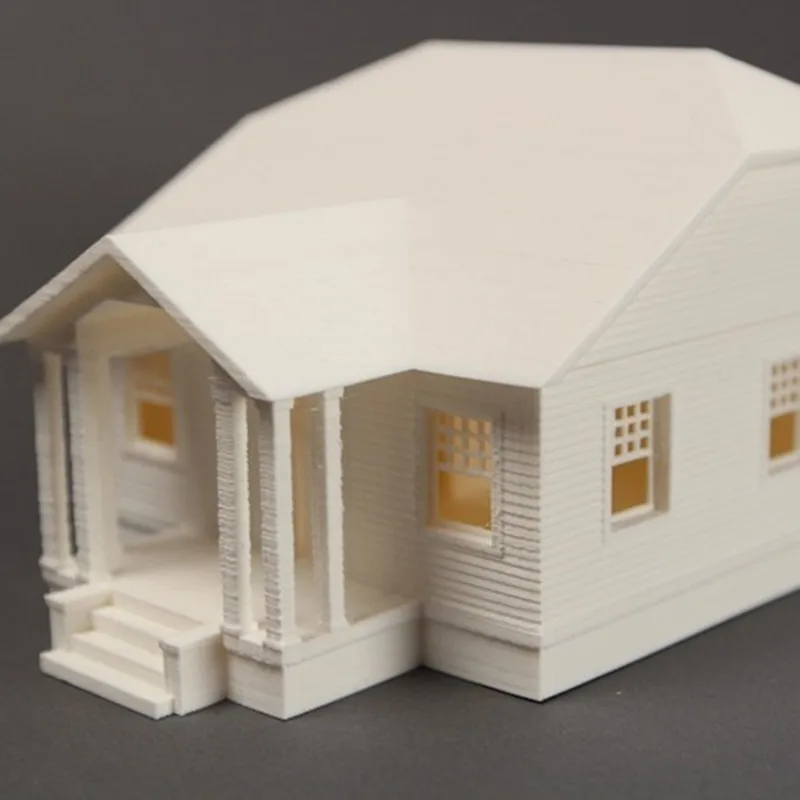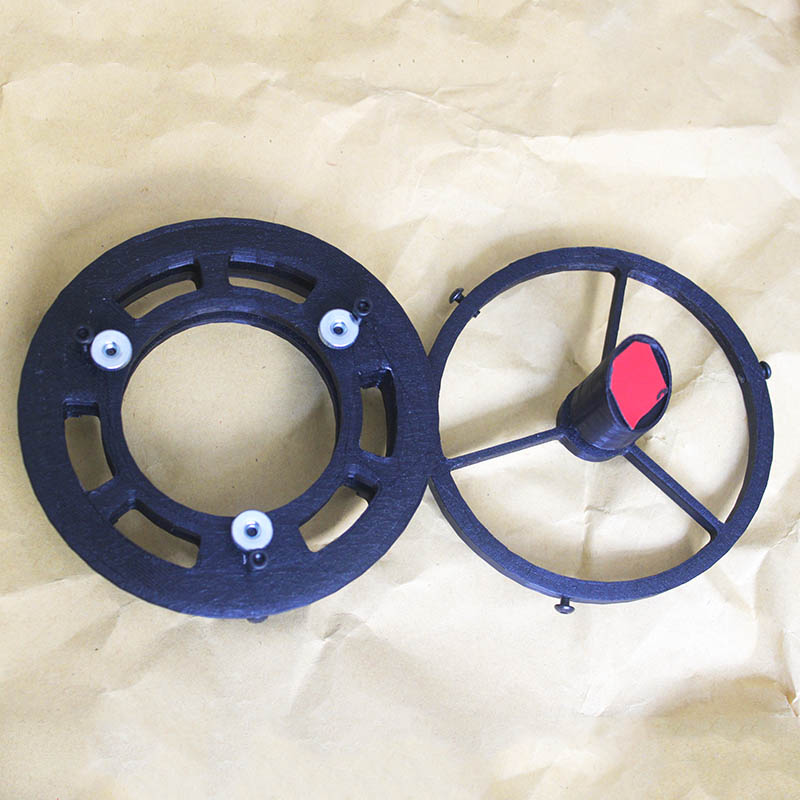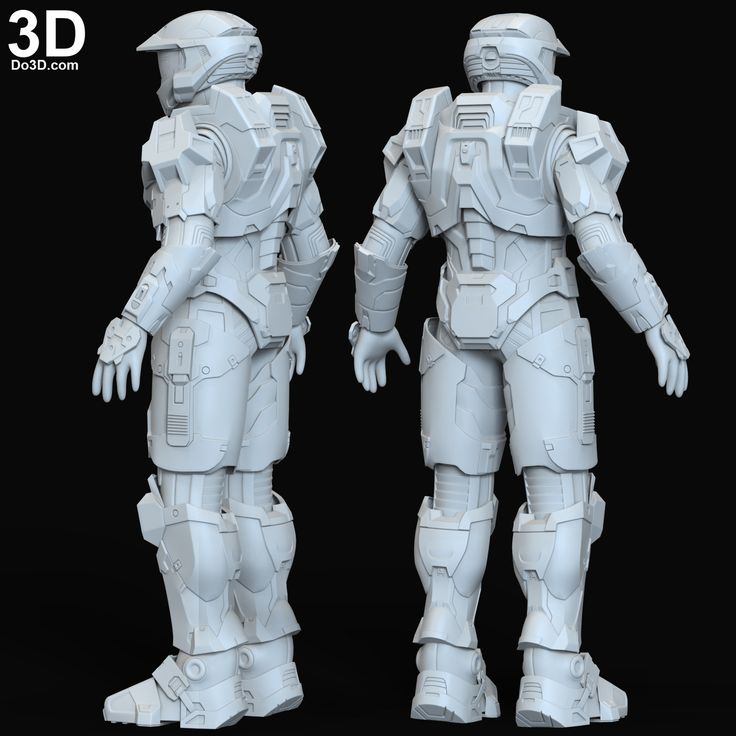3D printer smallest
9 Best Smallest Mini 3D Printers In 2022
- Last Updated: December 20, 2022
- Pat Nathaniel
If you’ve come to this page you most likely fall into one of these categories:
- You’re tired of big-bottomed 3D printers hogging up your desk space. Now you’re looking for something smaller.
- You’re a beginner and you just want a small, inexpensive printer that gets stuff done.
- You have a child that you’re itching to get off your back, and after guitars, soccer, and books have failed, you’re hoping 3D printing would be a good distraction for them.
Well, no need to worry. We’ve reviewed the best small 3D printers in the market. And none of them require you to earn your mechanical engineering degree.
Flashforge Adventurer 3 Lite
Build Volume: 150 x 150 x 150 mm
Get Discount Now
Check Latest Price
Monoprice Select Mini V2
Build Volume: 120 x 120 x 120 mm
Check Latest Price
Prusa Mini+
Build Volume: 180 x 180 x 180 mm
Check Latest Price
Table of Contents
- Top 9 Mini 3D Printers At A Glance
- 1.
Monoprice Select Mini V2 (Best Choice)
- 2. Flashforge Adventurer 3 Lite (Best Value)
- 3. Prusa Mini+ (Premium Choice)
- 4. Monoprice Cadet (Best Introductory Printer)
- 5. Creality Ender 2 Pro
- 6. Phrozen Sonic Mini 8K (Highest Detail Quality)
- 7. Creality CR-100 Mini
- 8. Prusa SL1S Speed (Fastest Resin Printer)
- 9. Elegoo Mars 2 Pro (Budget Resin Printing)
- 1.
- Printing Power in a Compact Package
Top 9 Mini 3D Printers At A Glance
1. Monoprice Select Mini V2 (Best Choice)
2. Flashforge Adventurer 3 Lite (Best Value)
3. Prusa Mini+ (Premium Choice)
4. Monoprice Cadet (Best Introductory Printer)
5. Creality Ender 2 Pro
6. Phrozen Sonic Mini 8K (Highest Detail Quality)
7. Creality CR-100 Mini
8. Prusa SL1S Speed (Fastest Resin Printer)
9. Elegoo Mars 2 Pro (Budget Resin Printing)
 Monoprice Select Mini V2 (Best Choice)
Monoprice Select Mini V2 (Best Choice) 3D Printer Type: FFF | Materials: PLA, ABS, TPU, TPE, TPC & PETG | Build Volume: 120 x 120 x 120 mm | Print Resolution: 100-300 microns | Maximum Print Speed: 55 mm/s
The Select Mini V2 builds upon one of the best budget-friendly printers in the market – the Select Mini. And it surpasses its predecessor in the process.
Monoprice is a company that resembles Creality; they make affordable mini 3D printers that perform well. And the Mini V2 is a testament to this.
Unlike most mini 3D printers, it comes with a printer bed that heats. This prevents your prints from warping (which causes the corners of the print to lift and detach from the build plate) as well as improves upon adhesion. In addition, the V2 includes a special BuildTak Mat, making it easy to pop prints out after printing.
However, the temperature on the print bed only goes up to 60°C; one that is not ideal for ABS prints.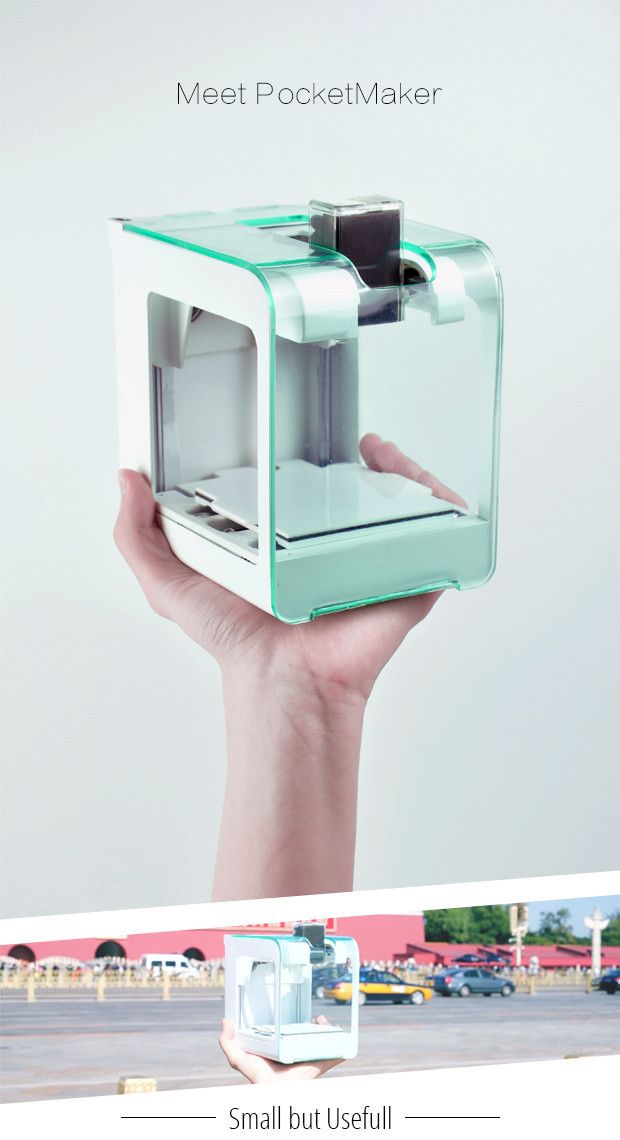
The Mini V2 has a miraculous way of 3D printing with near-perfect accuracy. The machine had a Midas touch, whatever we threw at it turned out pure gold, metaphorically speaking. Sure, you can find flaws if you use a magnifying glass. But at the price point, the print quality is amazing.
This small 3D printer is heavy, with an all-metal body. This helps the Monoprice stand strong and not budge during printing.
At 55mm/sec print speed, don’t expect the Mini V2 to beat Sonic the Hedgehog. If you’re an impatient sort, this printer is not for you. We recommend the Monoprice Mini Delta V2 instead if speed is your middle name.
- Check out more fast printing 3D printers here
That said, Monoprice Select Mini V2 has a great community, and you can connect with fellow owners in good ole Reddit at https://www.reddit.com/r/MPSelectMiniOwners/. Any questions that trouble you on your 3D printing journey can be answered there.
With a great cost-to-performance ratio, this 3D printer is ideal for those that want a great machine on a budget.
- Affordable
- Amazing print quality
- Average print speed
- Has issues printing ABS
Check Latest Price
2. Flashforge Adventurer 3 Lite (Best Value)3D Printer Type: FDM | Materials: PLA, ABS, Metal & Wood | Build Volume: 150 X 150 X 150 mm | Print Resolution: 100-400 microns | Maximum Print Speed: 100 mm/s
Are you a new wanderer in this rich yet confusing world of 3D printing, and you can’t find your way around? Then pick up The Flashforge Adventurer 3 Lite to be a starter guide on your journey!
It has a cube-like design that is unique and pleasing to the eye.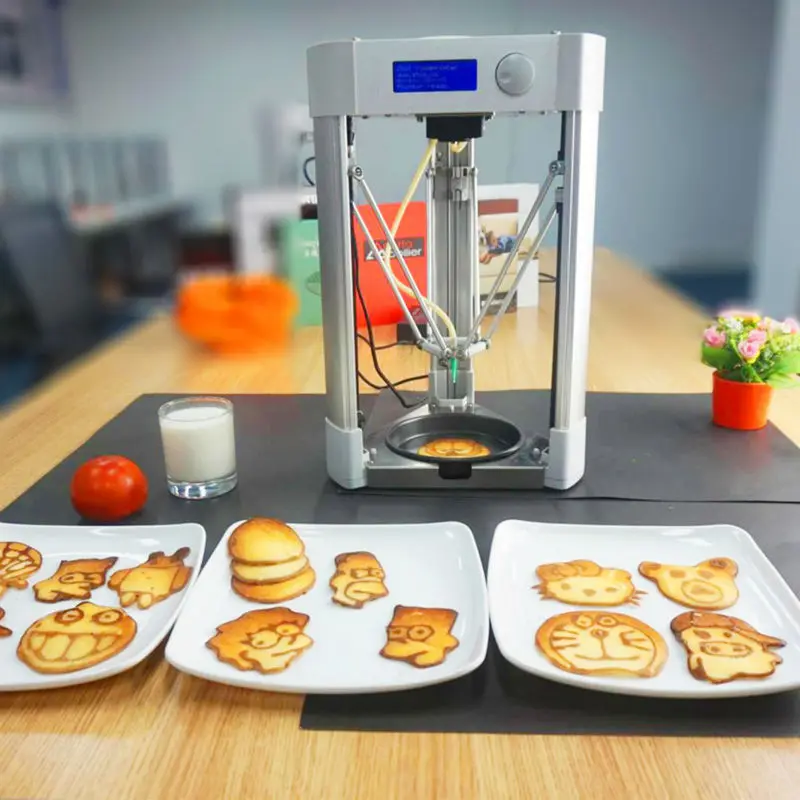 If you have kids, this is one of the safest printers to have in your house, as it is completely enclosed. A closed space also helps control the temperature (hence better printing) and keeps children safe from toxic fumes.
If you have kids, this is one of the safest printers to have in your house, as it is completely enclosed. A closed space also helps control the temperature (hence better printing) and keeps children safe from toxic fumes.
The sibling of the Adventurer 3 Lite, the Adventurer 3, has a camera – a feature the former lacks. So if watching your prints from afar is crucial to you, you may want to look into the latter.
The touchscreen UI is clean and simple to use.
With the right settings dialed in, the prints turn out fine, with layer lines being almost imperceptible. There was only minor stringing that I noticed on some of the pieces.
For the wanderers who don’t understand the 3D printing jargon above, suffice to say that print quality of the machine is great.
The Adventurer 3 Lite isn’t free from problems, however. Many users complained about loud noises as well as poor customer service.
Nonetheless, this compact 3D printer is perfect for ABS, unlike the Monoprice Select Mini V2 and the Mini V2.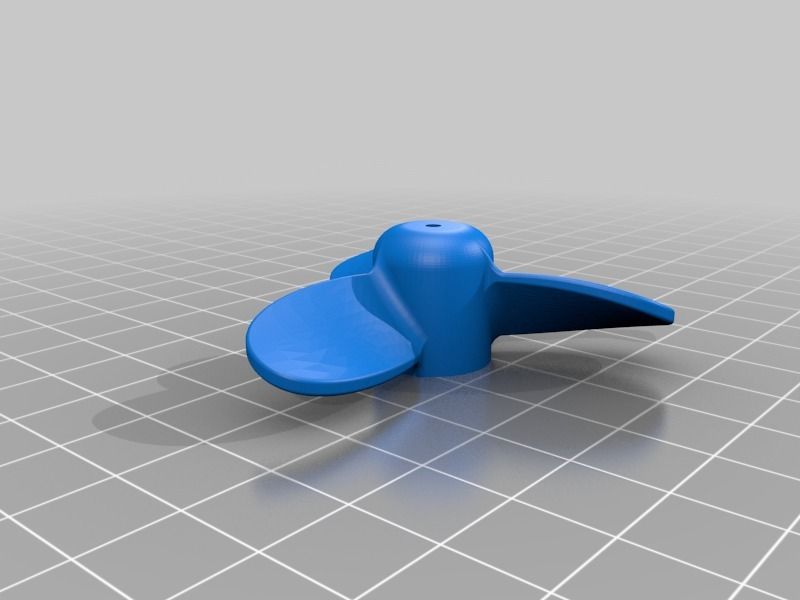 So if you want to print functional parts, there’s no better option than the Adventurer 3 Lite.
So if you want to print functional parts, there’s no better option than the Adventurer 3 Lite.
- Enclosed space keeps children safe
- Simple to use
- Prints ABS well
- Printer can be loud
Get Discount (Official Store)
Check Latest Price
3. Prusa Mini+ (Premium Choice)3D Printer Type: FDM | Materials: PLA, PETG, ASA, ABS, Polycarbonate, CPE, PVA/BVOH, PVB, HIPS, Polypropylene, Flex, nGen, Nylon & Woodfill | Build Volume: 180 x 180 x 180 mm | Print Resolution: 50 microns | Maximum Print Speed: 200 mm/s
The Prusa Mini+ is a small premium 3D printer that even 3D printing veterans sing songs about.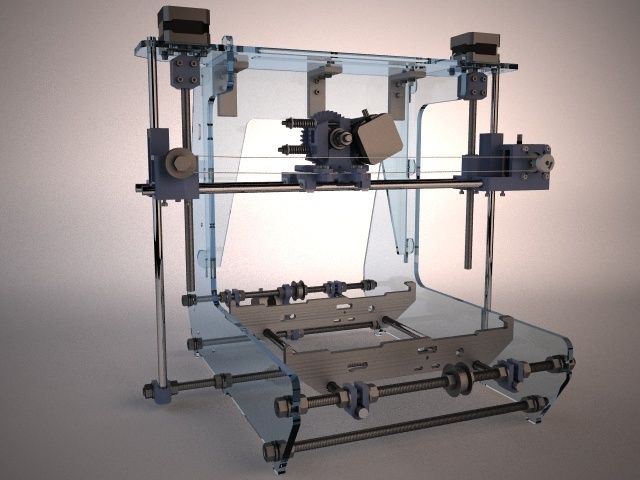
Due to its worldwide status and small size, this printer is superb for classrooms and laboratory environments. The machine has a unique look that is a head-turner.
The printer requires assembly, so this isn’t your standard plug-n-play small 3D printer. While beginners may object to this, potentially serious hobbyists will love learning about the machine during its set up.
Installing the machine takes around an hour and a half of your time. You’ll find the process rewarding thanks to the clear instructions given.
A welcome upgrade from the older MK3S is the touchscreen. It’s intuitive for a newcomer and shows print completion time, material in use, etc.
Like a typical human family, the Prusa is noisier than its elder brother MK3S (yeah printers can be dysfunctional too).
Print quality is just what you’d expect from a Prusa machine – freaking good. In fact, it’s almost as good as the MK3S (which is crazy considering that the MK3S is double the price).
The Mini can handle ABS, PLA, PETG, ASA, and flex. Its filament versatility lies in the fact that it can even reach temperatures of 275°C.
The 3D printer comes with a medium-sized build volume of 180 x 180 x 180 mm vs the MK3S’s 250 x 210 x 210mm.
Coming from a company that builds fantastic printers, this is one small 3D printer that you’ll never regret buying.
- Excellent print quality
- Intuitive interface
- Handles a variety of filaments
- Looks sleek and compact
Check Latest Price
4. Monoprice Cadet (Best Introductory Printer)3D Printer Type: FDM | Materials: PLA Only | Build Volume: 100 x 105 x 100 mm | Print Resolution: 100-500 microns | Maximum Print Speed: 150 mm/s
Are you looking to introduce yourself or perhaps your kid to 3D printing? Monoprice Cadet makes for an affordable first 3D printer.
Monoprice touts Cadet as the “world’s easiest to use 3D printer.” The machine comes with automatic leveling and Wi-Fi connectivity that are supposed to get you printing in 30 seconds.
In reality, you may have to put in a bit more effort. Don’t get us wrong, it’s easy to get started on Cadet. But the mobile Wi-Fi app is temperamental, so you may have to use a USB stick instead.
Once you do have everything set up, Cadet is a surprisingly adept printer. The print quality is quite good and you can even make functional parts and components. As long as those parts can be made with PLA, that is. Unlike Monoprice’s Select Mini V2, Cadet doesn’t have a heated bed. Its build volume is also tiny, so your printing options are rather limited.
Additionally, the machine itself is so small that it can’t hold a normal full-sized filament spool. You’ll have to either buy smaller spools or snip off a length of filament and wrap it around the holder.
But then again, if you don’t have much space available, the compact design is only a positive thing.
Really, Monoprice Cadet is a good printer as long as you temper your expectations. It’s not an advanced printing powerhouse, but it’ll serve you well as your first 3D printer.
- Affordable
- Ready to go out of the box
- Decent print quality
- Supports PLA only
- Can’t hold a full-size filament spool
- Poor control app
Check Latest Price
5. Creality Ender 2 Pro3D Printer Type: FDM | Materials: PLA, TPU & Wood | Build Volume: 165 x 165 x 180 mm | Maximum Print Speed: 100 mm/s
Think of Ender 2 Pro as the big brother of the Creality CR-100 Mini. It’s from the same family, it has just grown up.
It’s from the same family, it has just grown up.
Ender 2 Pro doesn’t come pre-built, but you don’t have to be an engineer to get it running. Just tighten seven screws and you’re in business.
And what business it is.
The print quality of Ender 2 Pro is great. It has a heated print bed, which reduces the warping issues that haunt the CR-100 Mini. Unfortunately, the bed doesn’t heat hot enough to print ABS. You can print PLA, TPU, and wood composites, though.
Ender 2 Pro is easy to use, with simple calibration and quick setup. You can start printing basically out of the box after the assembly.
This FDM 3D printer is affordable, which is great because that leaves you money for customizing it. The basic model’s performance is good for beginners but probably won’t carry you all that far. That is, until you start swapping parts for what you’d prefer.
We wouldn’t necessarily recommend Ender 2 Pro as your first 3D printer, though. It can be a bit fiddly and the online community is small, so support might be difficult to find.
As another notable downside, the printer is pretty loud. It sounds like a microwave when it runs.
But Ender 2 Pro is a great machine for those looking to move beyond their first printer.
- Great print quality
- Easy setup and usability
- Customizable
- Noisy
- Users will outgrow the machine
Get Discount (Official Store)
Check Latest Price
6. Phrozen Sonic Mini 8K (Highest Detail Quality)3D Printer Type: LCD | Materials: 405nm UV Resins | Build Volume: 165 x 72 x 180 mm | Print Resolution: 22 microns | Maximum Print Speed: 80 mm/h
If first-class detail quality is what matters to you the most, you only have one option to consider. Phrozen Sonic Mini 8K produces resin prints with absolutely mind-blowing accuracy.
Phrozen Sonic Mini 8K produces resin prints with absolutely mind-blowing accuracy.
Armed with a 7.1” 8K resolution LCD screen, an XY resolution of 22 microns, and a layer thickness of 0.01 mm, Sonic Mini 8K prints professional-level detail. To put that in simpler terms, even the tiniest details of your miniatures or other prints will come out crisp and clear.
Although Sonic Mini 8K is still a small printer, it has a well-sized build volume of 165 x 72 x 180 mm. But you won’t have to wait long for it to fill the chamber.
Phrozen Mini is an even faster resin printer than the Elegoo. It creates stunning prints in record time.
But be warned; all that power isn’t easy to harness. There’s a steep learning curve if you want to get the best possible results. Be prepared to tweak the settings and produce failed prints as you experiment.
The second big thing to consider is the price. Sonic Mini 8K’s high quality comes at a high cost.
But should you need the ultimate quality, you’re probably ready to pay for it.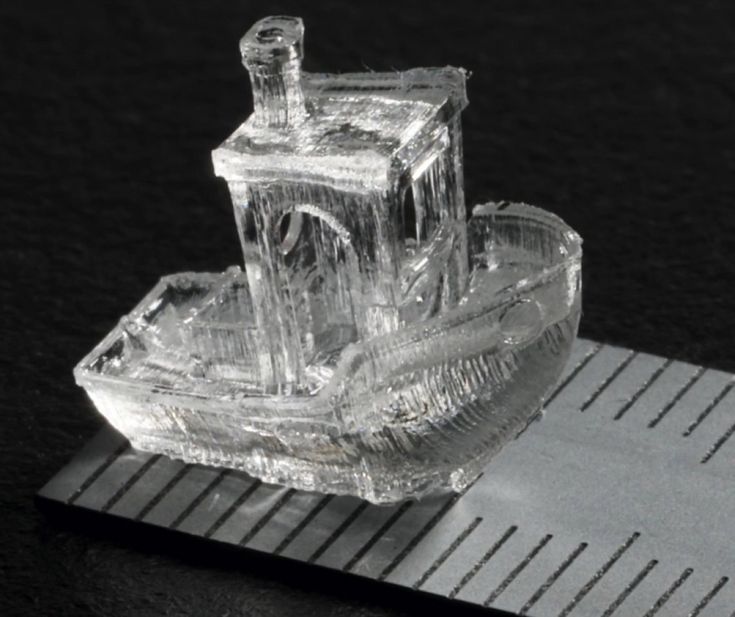 And make no mistake, Phrozen Sonic Mini 8K has print quality in droves.
And make no mistake, Phrozen Sonic Mini 8K has print quality in droves.
Check out our article on the best 8K 3D printers here if you want to learn more about the highest print quality resin printers.
- Stunning print quality
- Very fast printing
- Quiet operation
- Great adjustability
- Expensive
- Steep learning curve
Get Discount (Official Store)
Check Latest Price
7.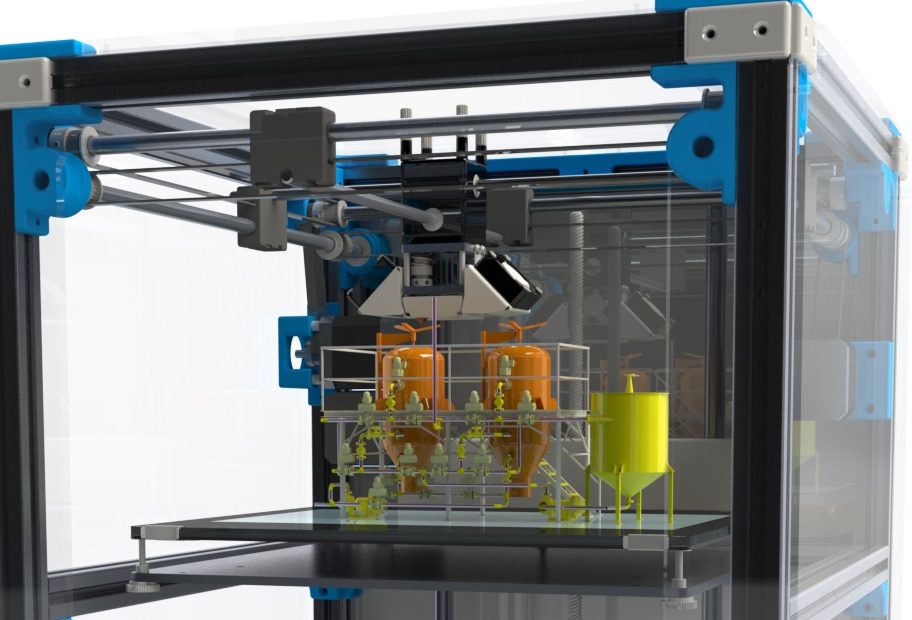 Creality CR-100 Mini
Creality CR-100 Mini 3D Printer Type: FDM | Materials: PLA Only | Build Volume: 100 x 100 x 80 mm | Maximum Print Speed: 180 mm/s
The CR-100 Mini is Creality’s attempt at taking over the best small 3D printer market. And it has successfully fought its way into our list.
Right out of the box, this printer is ready to go. Setup is effortless – just add the spool, plug the printer into the socket and watch your creativity come alive (in plastic).
Using the 3D printer is effortless; the printer comes with a touchpad with three functions – one to start the print, the other to stop, and one to regulate the temperature. No more complicated dials.
The CR-100 Mini works well without a heated bed (surprisingly). Parts pop off quickly once you’re done printing. This means that you don’t need to waste precious time waiting for the printer to heat up or cool down.
However, you do lose the ability to print ABS it requires a heated bed to be printed well.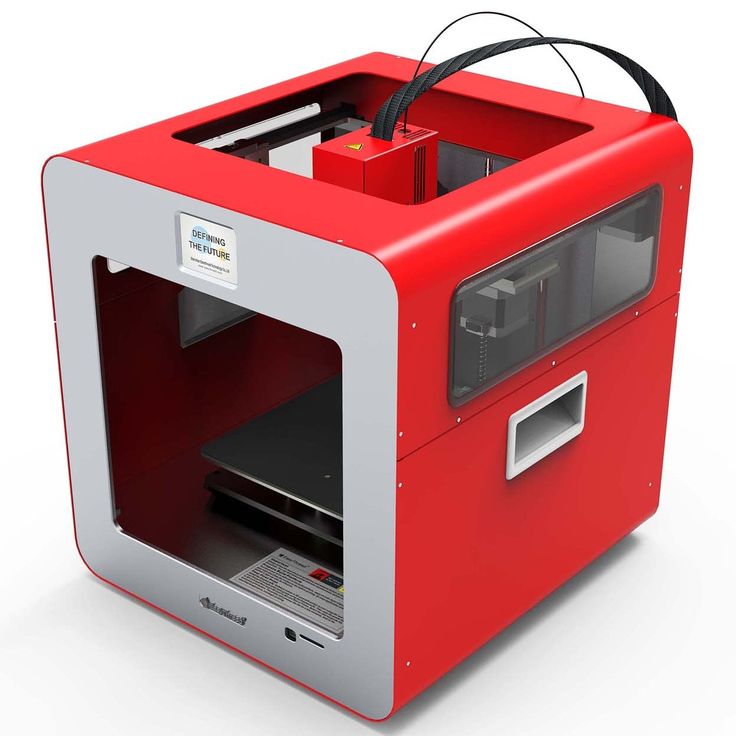
But not all parts turn out like the Mona Lisa. Some of our trial prints did have warping issues. However, they were minor, and only a veteran 3D printing hobbyist would consider it unforgivable.
If you have kids, they’ll have a great time with the machine. Just make sure that they don’t climb on it, thinking it’s a truck!
Now don’t expect to make huge prints with this CR-100 (or any machine in this list for the matter). To state a rather obvious point – small 3D printers don’t have enough build space to create life-like replicas. At best, they’re suitable for miniatures. But look on the bright side, you’ll save up plenty of room in your house.
The CR-100 Mini does an excellent job in the mini 3D printer department, and I highly recommend it.
- Simple to use
- Fits your desk easily
- Affordable
- Susceptible to warping
- Not for professional 3D printer users
Check Latest Price
8.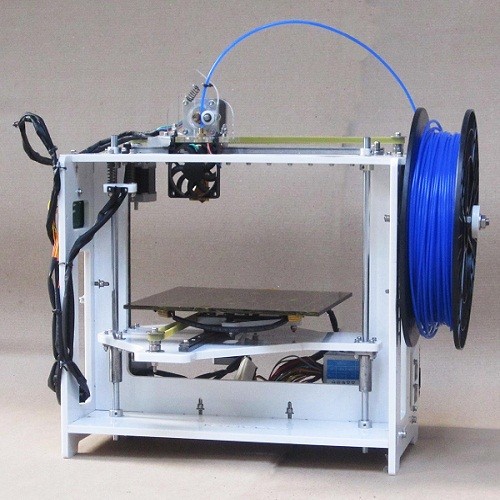 Prusa SL1S Speed (Fastest Resin Printer)
Prusa SL1S Speed (Fastest Resin Printer) 3D Printer Type: MSLA | Materials: 405 nm UV Resins | Build Volume: 127 x 80 x 150 mm | Print Resolution: 50 microns | Maximum Print Speed: 1.4 s/layer
You want top-notch resin prints and you want them fast. But neither the Elegoo nor the Phrozen printers are fast enough for you.
That’s when you turn to Prusa SL1S Speed.
SL1S is a pro-level resin 3D printer that produces quality prints at lightning-fast speed. With a print speed of 1.3-2.4 sec/layer, this speed demon leaves both of the other resin printers on this list in the dust.
But even that speed is pointless if fiddling with the printer eats up all the time savings. That’s not something you have to worry about with SL1S, though. This machine is automated to a very high degree. As a particular highlight, print bed leveling is an incredibly smooth experience — just lightly loosen or tighten one bolt and the machine takes care of the rest.
The tradeoff for speed is detail quality. Although SL1S still trounces FDM printers, it has lower accuracy and resolution than the Elegoo and Phrozen.
And then there’s the price. We said Phrozen was expensive — SL1S is even more so. Granted, you get a highly automated printer with pro-level speed for the price, but it’s still a lot of money.
If you’re ready to pay the ultimate price for the ultimate speed, though, no other printer can catch Prusa SL1S.
- Ridiculously fast
- Highly automated
- Simple usability
- Very expensive
- So-so detail accuracy
Check Latest Price
9. Elegoo Mars 2 Pro (Budget Resin Printing)
Elegoo Mars 2 Pro (Budget Resin Printing) 3D Printer Type: LCD | Materials: 405nm UV Resins | Build Volume: 129 x 80 x 160 mm | Print Resolution: 50 microns | Maximum Print Speed: 30-50 mm/h
All of the above printers were suitable for ABS or PLA only. But if you’re looking for a resin printer, then the Elegoo Mars 2 Pro is a great affordable solution.
The Mars 2 Pro comes with a 6.08 monochrome LCD with a 2K HD resolution. Tech mumbo-jumbo aside, this just means that the printer is faster, more efficient than regular RGB LCD resin printers.
The build quality is solid, with a CNC machined aluminum body. Because of this, all movements in the machine are steady, which leads to precise prints.
Prints created by the Elegoo Mars 2 have fine details and a high resolution. Resin 3D printers have better accuracy and resolution than standard FDM printers. Their prints feel smooth to touch and have a premium feel to them.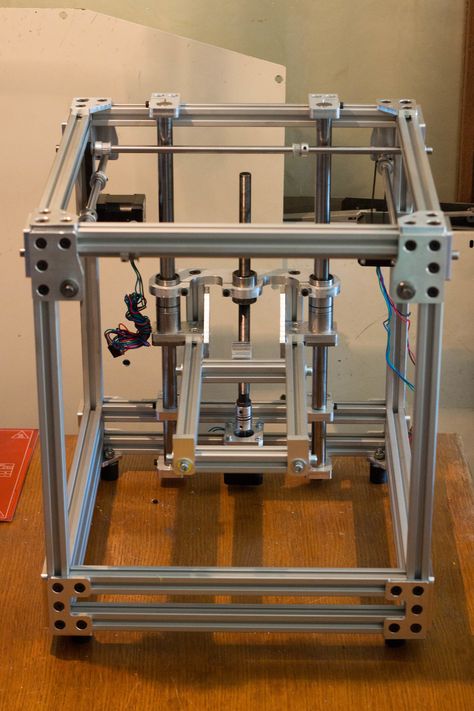
- Check out our reviews of the best 3D resin printers here
- and the best high resolution 3D printers here
Is speed an important quality while looking for your future partner? (sorry, um..printer?) The Mars 2 Pro is quick, losing only to the Phrozen machine.
This mini 3D printer is quiet.
Approach resin 3D printing with caution, the fumes generated are toxic. Ensure that there’s sufficient ventilation in your room. Otherwise, the fumes can a) irritate your lungs and b) cause skin allergies.
Luckily the Mars 2 Pro comes with a carbon filter that protects you from some of the fumes during 3D printing. Despite this, we still suggest taking necessary precautions to protect yourself from harmful fumes.
Tabletop gamers and comic book fans would be happy to know that the printer is excellent for building miniatures and action figures.
The Elegoo Mars 2 Pro is a high-quality machine that is popular worldwide and is one of the better printers on this list.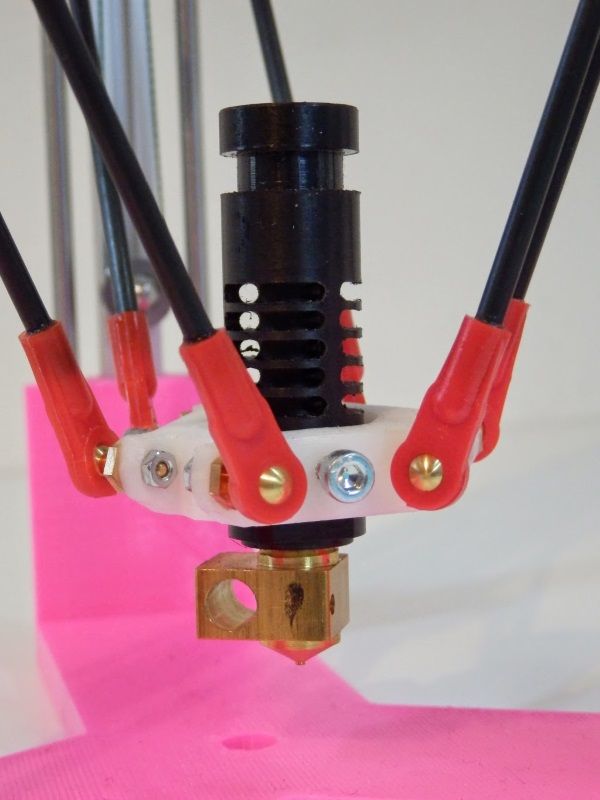
- Prints great miniatures and action figures
- High-resolution print quality
- Fast print times
- Toxic resin fumes
Get Discount (Official Store)
Check Latest Price
Printing Power in a Compact Package
Whether you’re looking for your first 3D printer or just want a compact machine, any of these printers will serve you well. All in all, they all serve at least good printing capabilities in a small package.
Consider what you want from a 3D printer and compare your list to the pros and cons of each machine.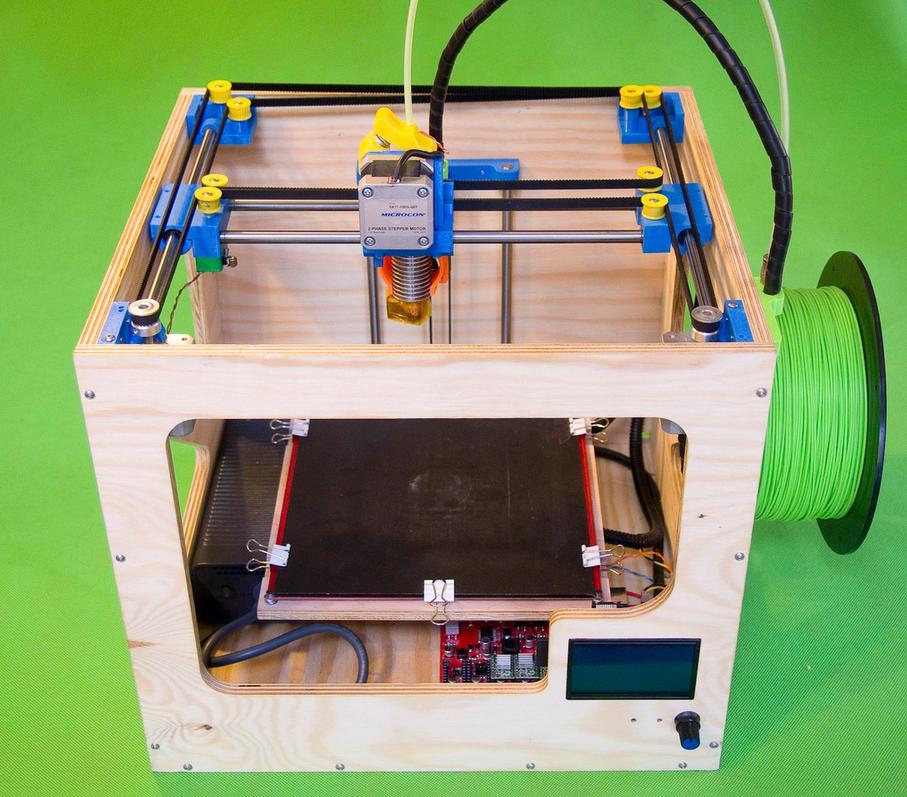 But if you’d like some recommendations, here are our favorites:
But if you’d like some recommendations, here are our favorites:
- For the best balance of cost and quality, pick Flashforge Adventurer 3 Lite.
- Monoprice Cadet lets you easily introduce your kid to 3D printers.
- Prusa Mini+ offers excellent quality and features.
- Elegoo Mars 2 Pro is your stepping stone to resin 3D printing.
- For the ultimate print detail, you can’t beat Phrozen Sonic Mini 8K.
Scientists Create the World's Smallest Boat
- Dutch researchers have 3D printed the world's smallest boat.
- Named for a popular (and tricky) 3D-printing test, "3DBenchy" measures in at just 30 micrometers, or about one-third of the thickness of a human hair.
- The scientists created the boat in a bid to enrich their research on microswimmers, or small particles that move in liquid.
Smaller things are simply better—kittens, puppies, miniature horses, miniature golf, you name it.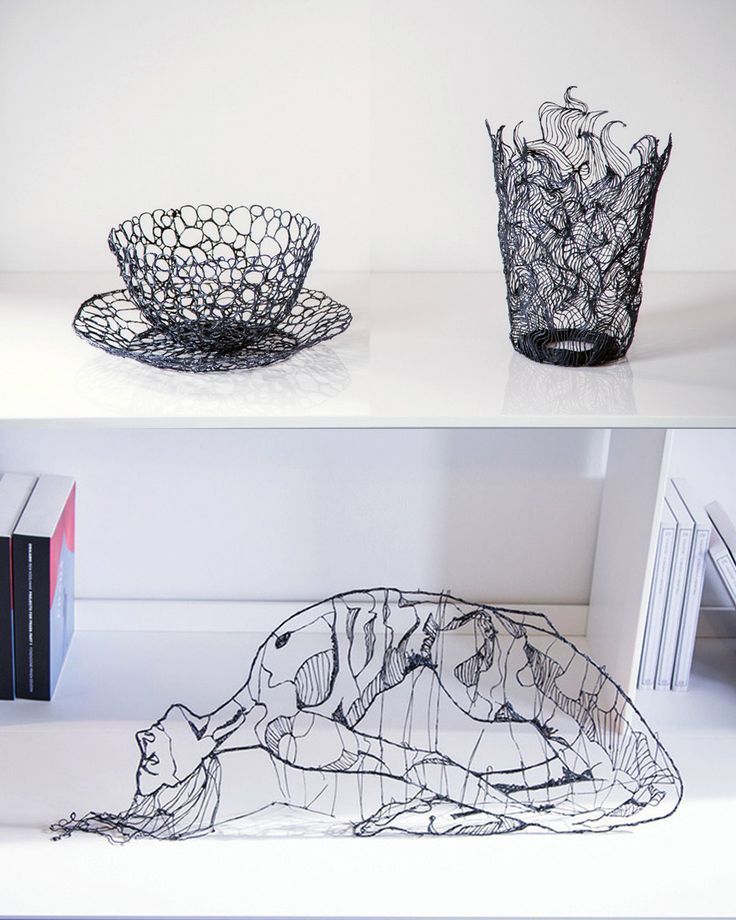 And it looks like the physicists at Leiden University in the Netherlands agree, as they've created another marvelous mini wonder: the world's smallest boat, courtesy of one very impressive 3D printer.
And it looks like the physicists at Leiden University in the Netherlands agree, as they've created another marvelous mini wonder: the world's smallest boat, courtesy of one very impressive 3D printer.
⚓️ You like badass boats (no matter how small). So do we. Let's nerd out over them together.
In their new paper, published in the journal Soft Matter, the Dutch researchers say they built the small boat to better study synthetic microswimmers, or microscopic particles that move around in fluids, such as water. Biological examples of microswimmers include sperm and flagellated bacteria, like E. coli.
"We want to understand how shape affects the motion and interactions of microswimmers," Daniela Kraft, an associate professor in soft matter physics at Leiden and one of the lead researchers, tells Popular Mechanics. "By creating synthetic microswimmers, we can single out the function that shape has. "
"
She continues:
"Biological microswimmers have other active mechanisms [like] to change motion direction, our synthetic ones really just swim. In the paper, we describe a method how we can functionalize any 3D printed object in such a way that they can swim."
From prow to stern, the baby boat measures in at just 30 microns, which is about one-third of the thickness of a strand of human hair. In theory, then, the little tug could travel along one of your locks—and you probably wouldn't even notice. It's so minuscule, in fact, that you can't even see this thing with the naked eye, Kraft says.
3D Printers For Every Budget
LABISTS Mini Desktop 3D Printer
Shop at Amazon
3Doodler Create 3D Printer Pen
Shop at Amazon
Comgrow Creality Ender 3-V2 3D Printer
Now 13% Off
$280 at Amazon
Dremel Digilab 3D20 3D Printer
$782 at Walmart
Kraft and her team decided to print a tugboat, rather than, say, a truck or some other random object because the computer-aided drafting file for the ship is a common test used in 3D printing, albeit usually at a much larger scale.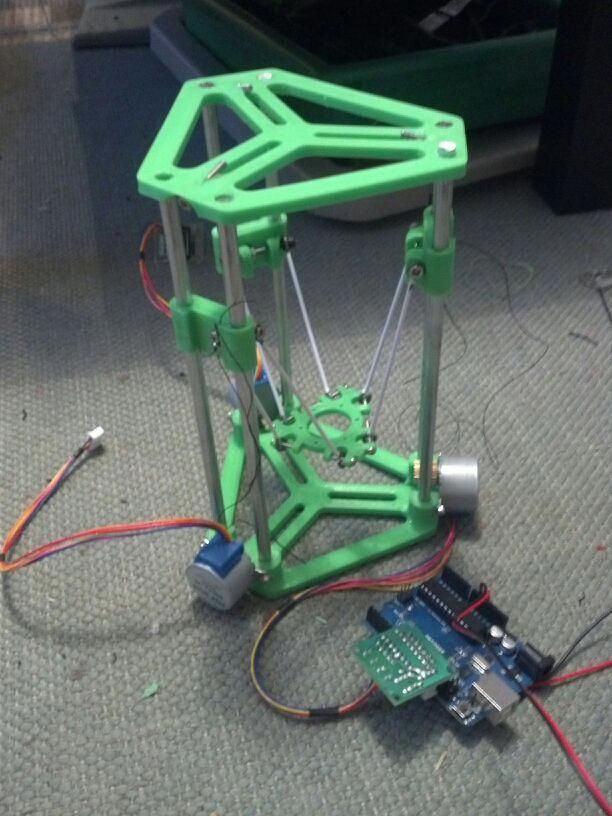
Known as "3DBenchy," the boat serves as a sort of benchmark to help determine the capabilities of a given printer, based on its ability to complete various "difficult-to-print features," Kraft says. One example is the inside of the cockpit, which features some unique geometries that are hard to print in general, let alone at this miniature scale.
This work proved the group's "Nanoscribe Photonic Professional" printer can fabricate even the tiniest 3D-printed objects. But it's not the kind of commercial 3D printer you'll be able to snag off of Amazon. Instead, it uses a laser, focused inside of a water droplet, to write the impossibly small structures, Kraft says.
Another Baby Boat
- Is This the Smallest Ship in the U.S. Navy?
On the official website for the Nanoscribe printer, marketing materials refer to it as the world's "highest resolution 3D printer," claiming the machine has helped teams complete at least 850 research projects in over 30 countries. The price isn't even listed—you have to contact the sales team for an offer—so you know this thing must be expensive.
The price isn't even listed—you have to contact the sales team for an offer—so you know this thing must be expensive.
Nanoscribe
Unfortunately, since the boat is too small to see, Kraft and her colleagues won't be setting out 3DBenchy on their desks as a quirky memento. However, they've used a regular old 3D printer to create gifts for members of the lab that leave, always in a theme that reflects their research interests.
If you ever visit Kraft's lab, though, you might spot a tiny Eiffel Tower that's just 2 millimeters in length. It's a standard design from the Nanoscribe machine that you can see, so it's a great way to quickly demo just how small the team can print.
Courtney Linder
Deputy Editor
Before joining Pop Mech, Courtney was the technology reporter at her hometown newspaper, the Pittsburgh Post-Gazette. She is a graduate of the University of Pittsburgh, where she studied English and economics. Her favorite topics include, but are not limited to: the giant squid, punk rock, and robotics. She lives in the Philly suburbs with her partner, her black cat, and towers upon towers of books.
Her favorite topics include, but are not limited to: the giant squid, punk rock, and robotics. She lives in the Philly suburbs with her partner, her black cat, and towers upon towers of books.
Small "pocket" 3D printer from PocketMaker
3DPrintStory News Small "pocket" 3D printer from PocketMaker
Although most 3D printing enthusiasts use low-cost desktop 3D printers, the consumer market is not that big yet. There are several reasons for this, including: a high price and a high entry threshold for those who do not follow innovations and are not a bit of a geek. nine0005
But maybe customers don't want a powerful 3D printer that can print large models from metal-based materials? Maybe an affordable, compact 3D printer is suitable for getting to know and fascinated with 3D printing technology?
That's why a Chinese startup has developed a small "pocket" 3D printer PocketMaker.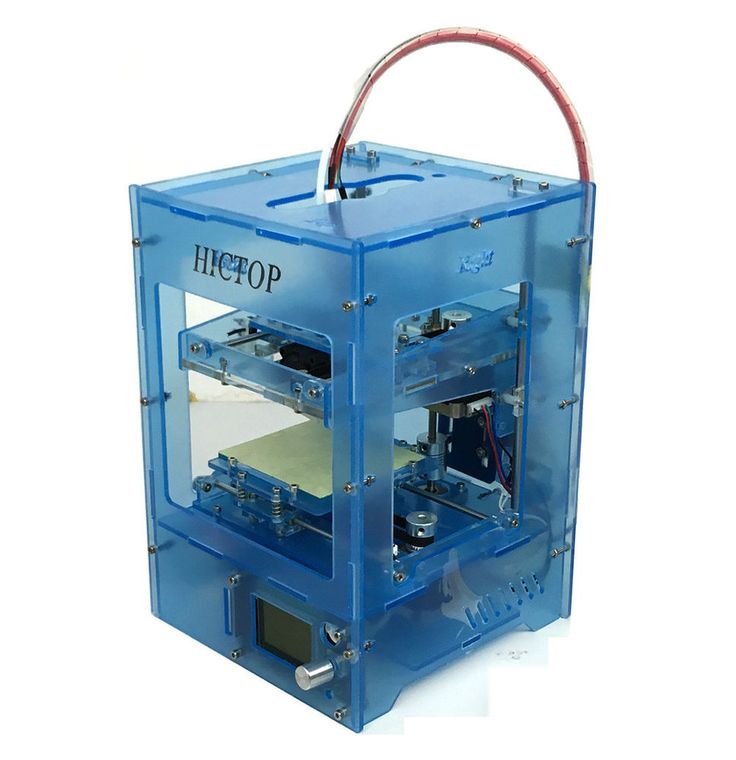
This "pocket" 3D printer is 80mm cube shaped and weighs only 2 pounds. This model resembles the M3D Micro 3D Printer which costs $350. But! PocketMaker is going to sell their miracle for $129! The printer is easy to change nozzle and printing table. Considering the print accuracy of 0.2 mm, WiFi module, USB for downloading models, the price is very small.
PocketMaker pre-order is $99. The company promised to complete the development and release the model in May/June 2017. In the latest update, on September 14, the team apologized for the delay in shipping the 3D printer for pre-orders, as they test each individual 3D printer.
Although PocketMaker offers their own PocketPLA media, this miniature 3D printer can also print materials from other manufacturers. Uses standard 1.75mm filament. You can use ABS, PLA and other polymers (the difference between PLA and ABS plastics). There are no restrictions on the choice of slicing programs either. A nice bonus is the ability to control the 3D printer from a smartphone (Android / IOS) and a computer (Windows / Mac). nine0005
nine0005
With so many nice technical and software solutions, why such a low price? According to the description of the crowdfunding company:
"The team designed and implemented a drive system to leave the minimum required components for stable and high-quality 3D printing, to make this model affordable and easy to use."
If the startup comes to an end and 3D printers are delivered to every customer, this will be a very serious bid in the limited market of miniature, "pocket" 3D printers. nine0005
The photo below shows a few ideas that you can implement with PocketMaker.
Subscribe to our Telegram channel 3DPrintStory and stay up to date with the most interesting posts and news in the world of 3D printing!
budget printers for beginners or technology to the masses / Sudo Null IT News
The moment has come that having a small desktop 3D printer at home is not at all expensive, and using it does not require deep knowledge of technology or printing experience. The store has several good models for less than $200 (!), which are suitable for novice users. All 3D printers can print with the popular and safe PLA plastic, which is odorless and the easiest to learn. nine0005
The store has several good models for less than $200 (!), which are suitable for novice users. All 3D printers can print with the popular and safe PLA plastic, which is odorless and the easiest to learn. nine0005
Many people have already used 3D printing services or at least heard about additive technologies.
Every year this technology becomes more accessible, and Gearbest also contributes to this by making personal 3D printers even more affordable: cheaper and with delivery from stock in the Russian Federation (!).
I'll start with a good 3D printer - E180 from Geeetech. Current value $219.
This copy was developed with crowdfunding and was a success in 2018. The 3D printer is equipped with a large touch screen, a Wi-Fi module with access from a smartphone and a special application, as well as a microSD card reader with an offline printing function. The E180 does not require a computer to operate and manage - a smartphone or tablet is enough.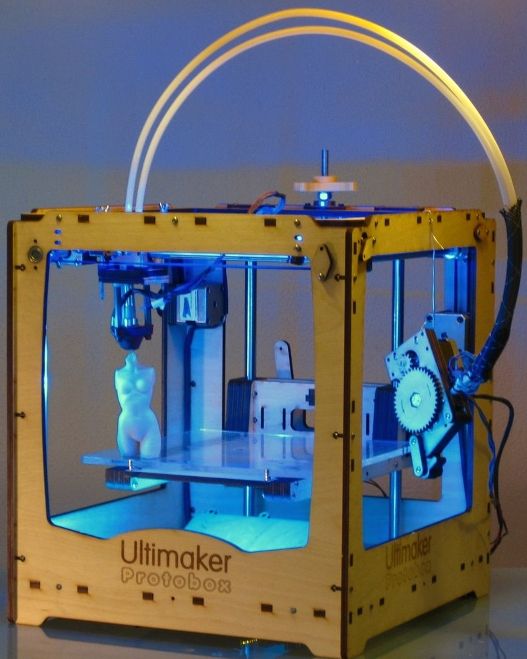 The pause of the press with saving of intermediate results is provided. You can change the filament or turn off/on the printer. In the event of a power failure, it is possible to continue from where it stopped. nine0005
The pause of the press with saving of intermediate results is provided. You can change the filament or turn off/on the printer. In the event of a power failure, it is possible to continue from where it stopped. nine0005
The printer prints with special nozzles Geeetech 0.4 mm. The print working area is 130x130x130 mm. Positioning accuracy up to 25 microns, minimum print layer: 50 microns. The compact strict design allows you to use it at work or in the office. No protruding wires or exposed hot components!
The next budget contender is the IUM1 Portable 3D printer with a print area of 110 x 110 x 120 mm.
Present value $189. The printer has a compact design with a closed design. All moving parts are inside the case. The table is equipped with a special removable polymer plate to increase the adhesion of parts, the plate itself is on a magnetic base for quick removal after printing. The printer has a microSD card reader for printing without a computer, as well as a print pause (pause) function for changing the filament. You can print colored parts in layers. Nozzle 0.4 mm, minimum print layer 100 microns. The printer is compact, lightweight, closed - suitable for home use, at school or in the office. nine0005
You can print colored parts in layers. Nozzle 0.4 mm, minimum print layer 100 microns. The printer is compact, lightweight, closed - suitable for home use, at school or in the office. nine0005
Another interesting and inexpensive option is the NANO 3D printer from Easythreed.
Current value $159.99 with coupon GBACERU0117C . This is a "cube" printer with closed kinematics. The table is completely motionless, the print head “flies” over the model, which has a positive effect on the print quality. The nozzle is set to 0.4 mm, the minimum layer is 0.1 mm. Due to the interesting design, the print area is divided into 2 parts. The main one is 110x110x90 mm.
Pay attention to his "big brother" - EasyThreed ET4000. This is a larger cube printer. nine0005
The current price is $237.99 — a bit more expensive, but the plus side is greater rigidity of the kinematics due to the increased number of rails, as well as the presence of a large touch screen for control.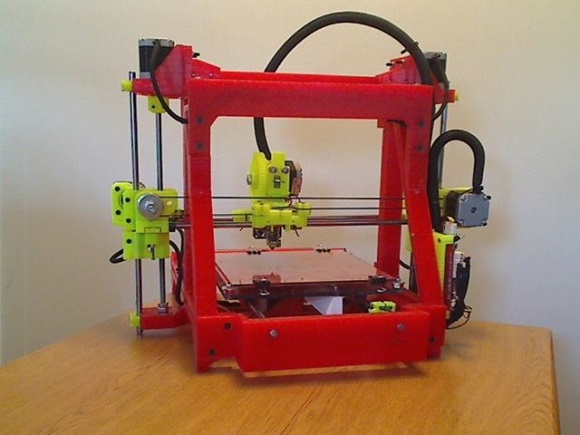 The size of the print area is 120x120x120 mm. The printing accuracy is increased, the available layer size starts from 50 microns. Nozzle too, 0.4 mm. The manufacturer provides protective glazing of the windows, which is very useful if the printer is accessible to children.
The size of the print area is 120x120x120 mm. The printing accuracy is increased, the available layer size starts from 50 microns. Nozzle too, 0.4 mm. The manufacturer provides protective glazing of the windows, which is very useful if the printer is accessible to children.
If you have the time and desire, you can assemble a 3D printer from the "constructor". One of the most popular build kits is the Alfawise EX8 3D printer kit. To date, this is the most budget option for home 3D printing. nine0005
Current price $145.99 including door-to-door shipping, actual parts price. Alfawise EX8 is made with the latest improvements for printers of this design. Installed two drives along the Z axis. Improved model airflow. The X carriage is reinforced. Alfawise EX8 is equipped with a direct feed extruder drive, which allows you to “feed” the printer any plastic: PLA, ABS, PETG, SBS, Flex, and so on ... The large graphic display makes it easy to control the printer, a print pause is provided, and the An SD card reader allows you to print offline.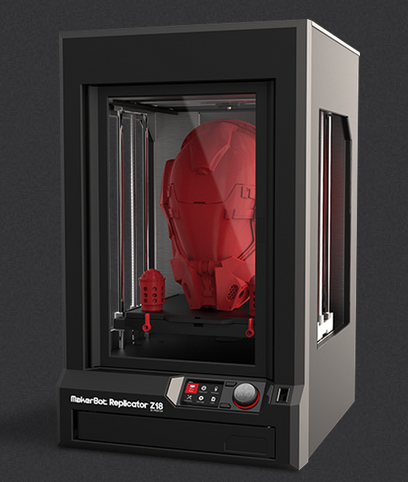 Table heating provided. The printer has the largest printable area of all listed: 220 x 220 x 240 mm. Minimum print layer: 100 microns. The nozzle is set to 0.4 mm, but it is possible to install any nozzle under the MK8 hotend. nine0005
Table heating provided. The printer has the largest printable area of all listed: 220 x 220 x 240 mm. Minimum print layer: 100 microns. The nozzle is set to 0.4 mm, but it is possible to install any nozzle under the MK8 hotend. nine0005
For comparison, I add a fairly expensive branded printer: Tronxy C5.
This is an aluminum die-cut printer in a clean black design. Current value $330.99. The printer also has a direct feed (MK8) and a printable area of 210 x 210 x 210 mm. Available materials: ABS, HIPS, Nylon, PLA, PVC, Wood. Positioning accuracy 12 microns, minimum layer 50 microns. Nozzle 0.4 mm. Airflow of the model is provided. Rigid metal housing provides accurate printing and reduced parasitic vibrations during operation. nine0005
Update:
At the request of the comments, I add Creality3D Ender-3 DIY 3D Printer
Inexpensive pre-assembled printer for $199.99, the final assembly takes about half an hour - installing the portal to the base, plus connecting the electronics.